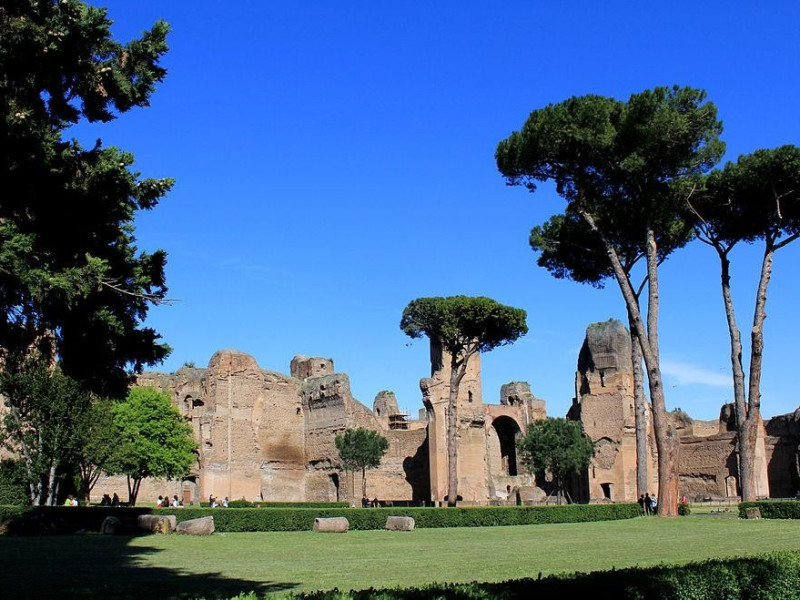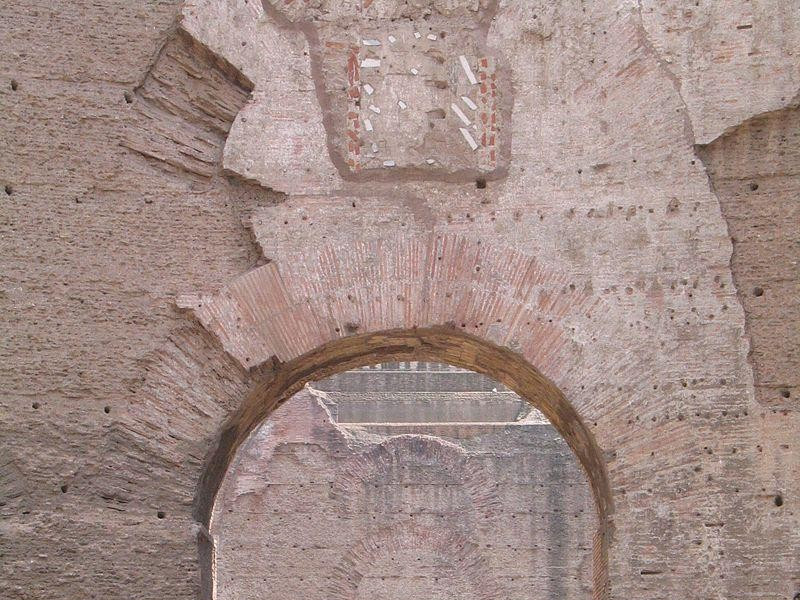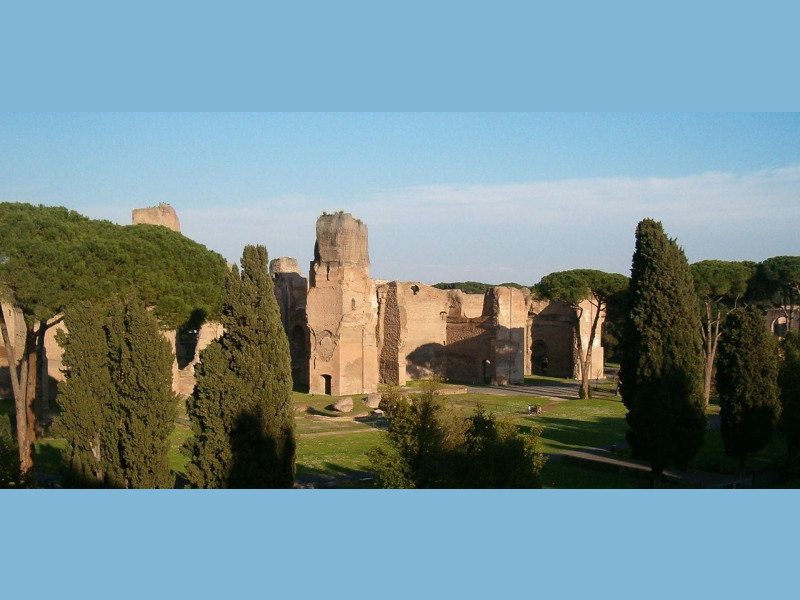Terme di Caracalla
The Baths of Caracalla (Italian: Terme di Caracalla) in Rome, Italy, were the second largest Roman public baths, or thermae, built in Rome between AD 212 and 216, during the reign of the Emperor Caracalla.[1] Chris Scarre provides a slightly longer construction period 211-217 AD.[2] They would have had to install over 2,000 tons of material every day for six years in order to complete it in this time. Records show that the idea for the baths were drawn up by Septimius Severus, and merely completed or opened in thEmperor Caracalla had the complex built as a piece of political propaganda. Romans from every social class enjoyed themselves in the impressive, exquisitely detailed building. Not only did this create a sense of unity, it also improved the public’s opinion of Caracalla because they attributed their pleasurable experience and lavish surroundings to him.
The baths remained in use until the 6th century when the complex was taken by the Ostrogoths during the Gothic War, at which time the hydraulic installations were destroyed.[4] The bath was free and open to the public. The building was heated by a hypocaust, a system of burning coal and wood underneath the ground to heat water provided by a dedicated aqueduct. It was in use up to the 19th century. The Aqua Marcia aqueduct by Caracalla was specifically built to serve the baths. It was most likely reconstructed by Garbrecht and Manderscheid to its current place.
In the 19th and early 20th century, the design of the baths was used as the inspiration for several modern structures, including St George's Hall in Liverpool and Pennsylvania Station in New York City. At the 1960 Summer Olympics, the venue hosted the gymnastics events.
The baths were the only archaeological site in Rome damaged by an earthquake near L'Aquila in 2009.[5]
Baths were originally ornamented with high quality sculptures, for example, among the well-known pieces recovered from the Baths of Caracalla are the Farnese Bull and Farnese Hercules and over life-size early 3rd century patriotic figures (now in the Museo di Capodimonte, Naples). One of many statues is the colossal 4 m statue of Asclepius.e lifetime of Caracalla.[3] This would allow for a longer construction timeframe. They are today a tourist attraction.




